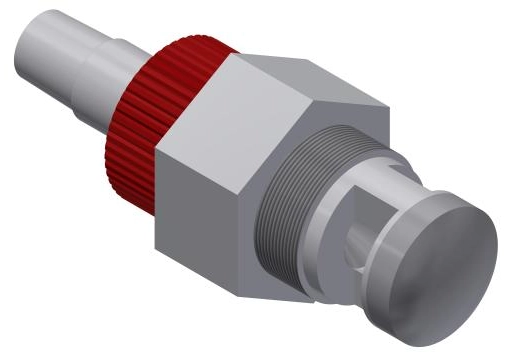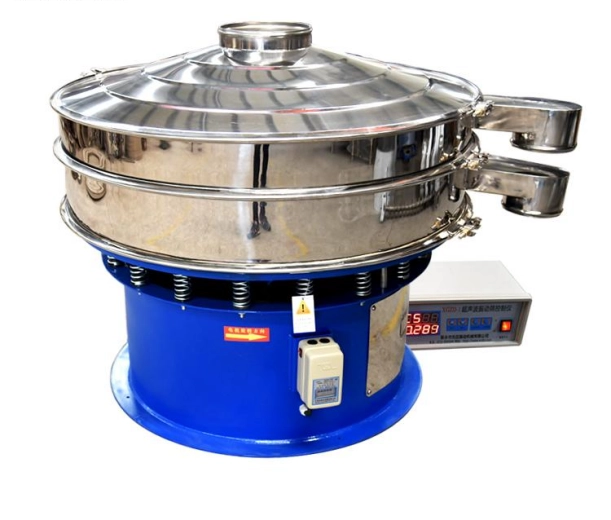Content Menu
● Understanding Powder Coating and Its Sieving Needs
>> What is Powder Coating?
>> Why Sieving is Critical in Powder Coating
● Key Considerations for Selecting Powder Sieves
● Best Powder Sieving Technologies for Industrial Applications
>> Vibrating Screeners and Industrial Sifters
>>> Dynamic Screener™
>>> Ranger Separator™
>>> Gyrasift™
>>> SaniDump Screener™
>> The Hi-Sifter Technology
● Optimizing Sieving for Powder Coating Smoothness and Quality
>> Choosing the Right Sieve Mesh Size
>> Sieving Application in Powder Coating Workflow
● Advantages of Using Industrial Powder Sieves for Powder Coating
● Challenges and Solutions in Powder Sieving for Coatings
>> Challenge: Mesh Blinding
>> Challenge: Achieving Narrow Particle Size Distribution
>> Challenge: Handling Diverse Powder Types
● Future Trends in Powder Sieving Technology
● Frequently Asked Questions (FAQs)
Powder coating offers a durable, high-quality finish widely used in industrial applications, from automotive parts to outdoor furniture. Central to achieving a consistent, flawless powder coating finish is the sieving process, which ensures powders are free of contaminants and have uniform particle size distribution. This article explores the best industrial powder sieves tailored for powder coating applications, their features, advantages, and how they improve the coating process.

Understanding Powder Coating and Its Sieving Needs
What is Powder Coating?
Powder coating is a finishing process where dry powder, typically composed of polymer resins such as epoxy, polyester, or acrylic, is electrostatically applied to a grounded surface and then cured at high temperatures. This results in a tough, visually appealing coating that resists wear, corrosion, UV damage, and temperature fluctuations. Its popularity lies in providing a cost-effective, durable alternative to liquid paints[4].
Why Sieving is Critical in Powder Coating
Uniformity in particle size distribution is crucial to ensure smooth, defect-free coatings that adhere evenly to surfaces. Sieving removes oversized agglomerates and foreign contaminants, protecting application equipment like spray guns and nozzles, and recycles reclaim powders by removing lumps or dust. Without appropriate sieving, issues such as mesh blinding, uneven flow, and rough film texture may arise[1][3][5].
Key Considerations for Selecting Powder Sieves
When choosing the best sieving equipment for powder coating applications, several factors must be evaluated:
- Particle Size Precision: The sieve mesh must precisely control particle size, often in the range of 100 to 125 microns for high-gloss coatings, as smaller or uneven particles can compromise film smoothness[5].
- Prevention of Mesh Blinding: Fine powders tend to clog sieve mesh, reducing throughput. Effective sieves incorporate technologies to maintain continuous screening flow[3].
- Volume Handling Capacity: Industrial operations require high throughput to process bulk powder efficiently. The sieve should sustain high volume without sacrificing accuracy or requiring excessive downtime[3].
- Ease of Cleaning and Maintenance: Easy disassembly and cleaning prevent cross-contamination across batches, vital in industries with stringent quality standards[1].
- Durability and Adaptability: Construction material and design should handle various powder types (thermoset and thermoplastic) without degradation and be adaptable for multiple applications including raw material screening, reclaim powder conditioning, and final product checking[1].
Best Powder Sieving Technologies for Industrial Applications
Vibrating Screeners and Industrial Sifters
Multiple advanced sieving machines dominate the industrial powder coating sector due to their efficiency and precision:
Dynamic Screener™
A robust industrial vibrating screener designed to provide uniform sieving of powder with high accuracy. It is easy to dismantle and clean, preventing contamination. Its vibrating mechanism ensures consistent material movement over the mesh, reducing blinding incidents and maintaining throughput[1].
Ranger Separator™
A vibratory separator that employs high-frequency vibrations to separate particles effectively. Its versatility suits different powder coatings including nylon, epoxy, acrylic, and specialty powders. The separator enhances product quality and safeguards spray equipment by filtering out lumps and foreign materials[1].
Gyrasift™
This industrial vibrating screener utilizes gyratory motion to deliver gentle but efficient powder screening. It is effective in handling powders with sensitive particle sizes or composite blends, maintaining integrity while sieving out contaminants[1].
SaniDump Screener™
Ideal for bulk processing, this industrial sieve features a large dump area enabling continuous, high-volume screening. Its hygienic design suits sectors with strict cleanliness requirements, such as automotive and electronics powder coatings[1].
The Hi-Sifter Technology
Elcan Industries' Hi-Sifter is engineered specifically for challenging powder coatings, providing key advantages:
- Mesh Blinding Prevention: The high-energy oscillation prevents clogging, sustaining a steady flow of powder.
- Precision Particle Size Control: Can sieve to exact specifications ensuring consistent coating finishes.
- High Throughput: Capable of processing large volumes without loss of accuracy.
- Reduced Downtime: Durable construction minimizes maintenance requirements, increasing operational productivity[3].
Optimizing Sieving for Powder Coating Smoothness and Quality
Choosing the Right Sieve Mesh Size
For glossy and smooth finishes, a sieve mesh size between 100 and 125 microns is optimal. Starting with 125 microns, particle size distribution and coating smoothness should be evaluated. If smoothness falls short, reducing mesh size to 100 microns can be effective, although excess large particles “overs” will need recycling back into the milling process. Adjustments to resin viscosity and cure rate can further enhance final film quality[5].
Sieving Application in Powder Coating Workflow
Powder sieves are integral at various stages:
- Raw Material Preparation: Eliminates oversized lumps and contaminants before mixing.
- Pre-Application Sieving: Conditions powder before electrostatic spraying for uniform application.
- Reclaim Powder Screening: Filters dropped or oversprayed powders for reuse without quality loss.
- Post-Cure Quality Control: Ensures only powders meeting particle size standards are shipped to customers[1].
Advantages of Using Industrial Powder Sieves for Powder Coating
| Advantages | Details |
| Improved Coating Uniformity | Consistent particle size enhances smooth, defect-free finishes. |
| Protection of Application Equipment | Prevents nozzle clogging and spray failures by removing contaminants. |
| Enhanced Process Efficiency | High throughput sieves reduce processing time and labor costs. |
| Powder Recycling Capability | Clean reclaim powders reduce waste and lower raw material costs. |
| Reduced Maintenance Downtime | Advanced designs and materials extend operational uptime. |
Challenges and Solutions in Powder Sieving for Coatings
Challenge: Mesh Blinding
Fine powders can quickly clog sieve meshes, causing downtime and inconsistent flow.
Solution: Use high-energy vibratory or gyratory screeners like the Hi-Sifter or Dynamic Screener, which utilize vibration patterns to continuously clear the mesh[1][3].
Challenge: Achieving Narrow Particle Size Distribution
A wide particle size range leads to poor film texture and defects.
Solution: Employ multi-stage sieving combined with optimized milling processes and adjust mesh size carefully based on particle size and finish requirements[5].
Challenge: Handling Diverse Powder Types
Different powder coatings require different handling due to their physical and chemical properties.
Solution: Select sieves built for versatility, able to handle both thermoset and thermoplastic powders including epoxy, acrylic, polyester, metallic, and specialized powders[1].
Future Trends in Powder Sieving Technology
- Automation Integration: Seamless integration with robotic powder coating systems for real-time sieving and application.
- Smart Screening Systems: Use of sensors and AI to monitor particle size and flow, adjusting operation dynamically.
- Sustainable Practices: More efficient reclaim powder processing to reduce waste and environmental impact.
- Improved Material Durability: Development of sieve screens resistant to abrasion and chemical attack for longer life cycles.
Frequently Asked Questions (FAQs)
1. What is the ideal sieve size for powder coating sieving?
For smooth, glossy finishes, a sieve size of about 100 to 125 microns is considered optimal. Adjustments may be needed based on specific resin systems and desired coating quality.
2. Why is preventing mesh blinding important in powder sieves?
Mesh blinding reduces the flow rate and efficiency of sieving, resulting in inconsistent powder feed and coating quality. Preventing it maintains throughput and uniform particle separation.
3. Can powder sieves handle both thermoset and thermoplastic powders?
Yes, modern industrial powder sieves like the Dynamic Screener and Ranger Separator are designed to process a variety of powder coatings including thermoset (epoxy, polyester) and thermoplastic types.
4. How often should powder sieves be cleaned in industrial applications?
Frequency depends on the production volume and powder type but ideally after every batch or color change to avoid contamination and maintain quality.
5. What advantages do vibrating screeners offer over traditional sieves?
Vibrating screeners provide higher throughput, consistent screening, reduced mesh blinding, and easier maintenance, making them more suitable for demanding powder coating operations.

[1] https://vibrascreener.com/powder-coating/
[2] https://patents.google.com/patent/CN101460238B/un
[3] https://elcanindustries.com/blog_posts/powder-coating-sieves-what-are-the-pros-and-cons-heres-what-you-need-to-know/
[4] https://www.nordson.com/zh-cn/about-us/newsroom/industrial-coating-systems-news/complete-guide-to-powder-coating
[5] https://www.pfonline.com/articles/proper-sieve-size-for-powder-coatings-smooth-results
[6] https://patents.google.com/patent/CN1109583C
[7] https://www.farleygreene.com/blog/sieving-for-dry-powder-coatings/
[8] https://patents.google.com/patent/WO2013078757A1/zh
[9] https://www.russellfinex.com/en/case-studies/powder-coating-sieving-technology/
[10] https://patents.google.com/patent/WO2020216351A1/zh
Hot Tags: China, Global, OEM, private label, manufacturers, factory, suppliers, manufacturing company










































 .
. 